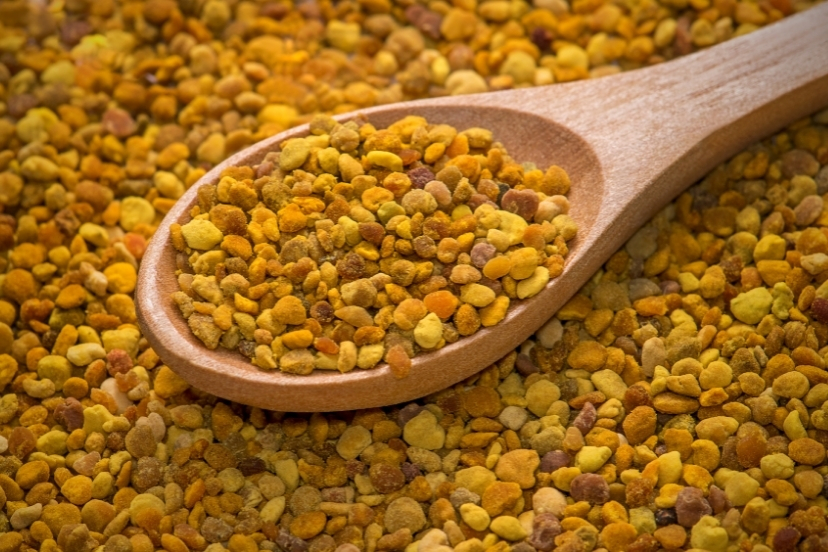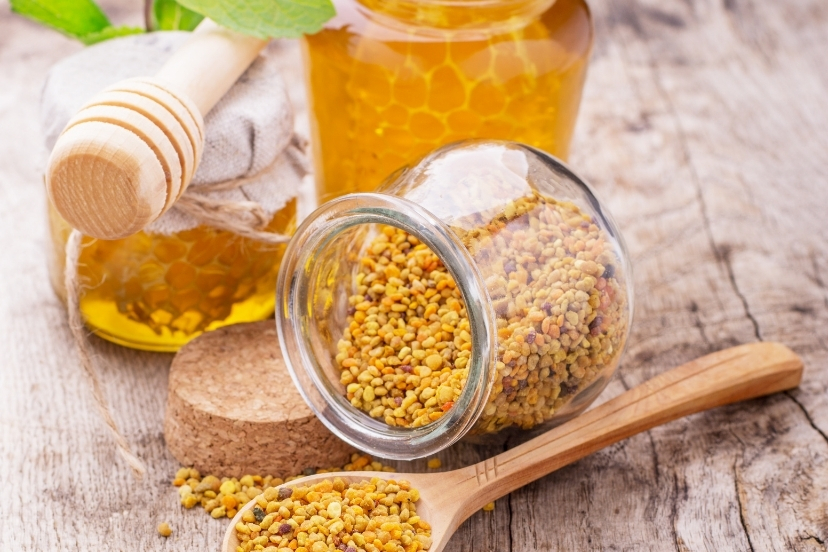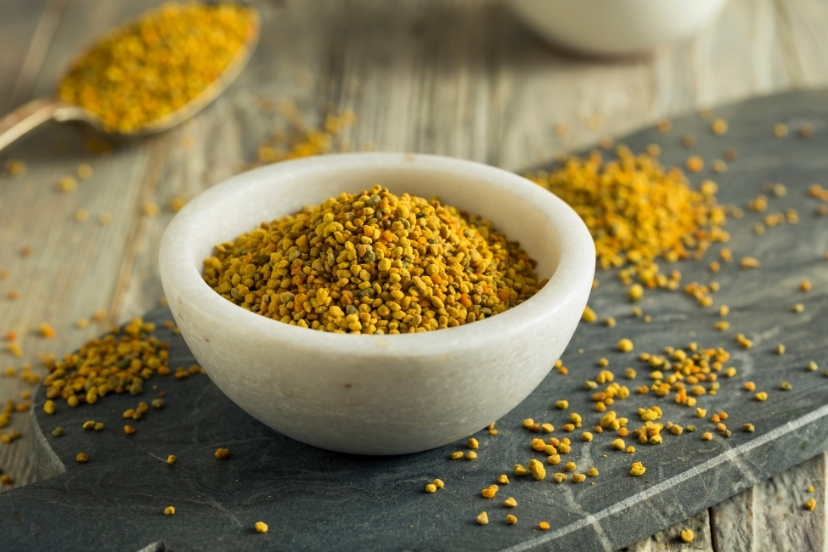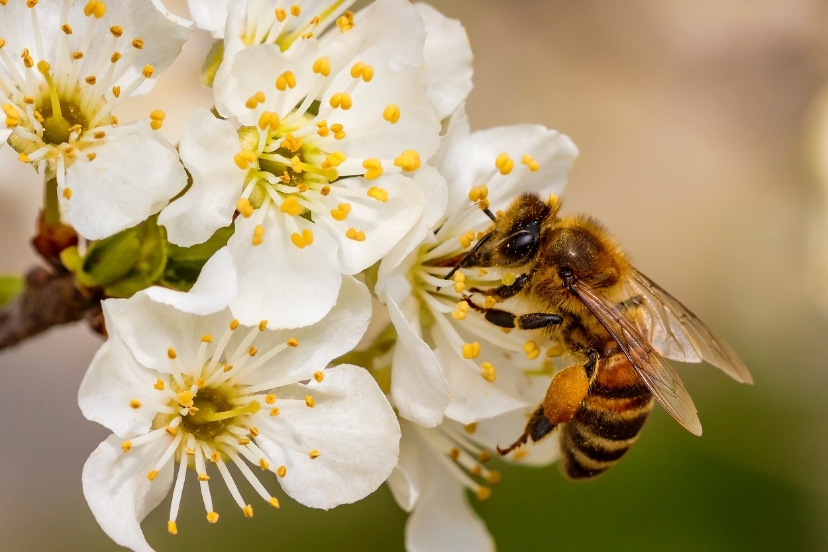It’s an astoundingly nutritious substance.
It’s a rich source of protein that provides many of the vitamins, minerals and trace nutrients that honey bees (and humans!) need to survive and thrive.
What Exactly Is Pollen (before the bees get to it)?
Before delving into the topic of “what is bee pollen?” it might be best to take a moment to explore the question of “what is pollen?”
Everyone knows, of course, that pollen comes from plants. But why do plants produce pollen?
Pollen is produced as part of the reproduction process of plants. In fact, a pollen grain is a male reproductive cell. It’s produced by a part of a flower called an anther.
In order for seeds to be formed so that the plant can reproduce, pollen grains must be transferred from the anthers to the female part of the flower called the stigma.
(The pollen grains must be transferred either from the anther to the stigma of the same flower, or from the anther of one flower to the stigma of another flower.)
A Little Help, Please…

These plants are capable of forming seeds and reproducing without the help of honey bees.
But other types of plants DO require help from honey bees and other pollinating insects. And it happens that many of the foods we eat are in the category of plants that need help from pollinating insects.
Most of these plants provide a sweet incentive to tempt insects into helping them. They generate nectar to entice an insect visitor to a flower.
When a honey bee visits the flowers to gather the nectar, she brushes against both stamens and stigmas. In the process, she transfers pollen grains from the male part of the flower to the female part of the flower.
So the bee unwittingly ensures the survival of the plant species, and helps to produce the food that both humans and animals depend upon.
Pollen is an Astoundingly Nutritious Substance
Honey bees help pollinate flowers during the process of collecting nectar. But they also visit flowers specifically to gather pollen.
Pollen is the only source of protein for honey bees, and they are dependent upon pollen for their survival.
In fact, pollen is a much better source of protein than many of the foods that we humans regularly consume for protein.
Pollen is made up of roughly 25% protein, and gram-for-gram contains 50% more protein than beef. But it’s also an extremely low-fat source of protein, containing only about half the fat of chicken.
And pollen provides a rich array of vitamins, minerals and micronutrients:
Pollen contains more than 7 times the amount of iron in beef, which is a food often recommended as a good source of iron.
Pollen is extraordinarily rich in carotenes, which have recently become highly regarded as health-promoting antioxidants.
Pollen is also one of the richest food sources on earth for a number of trace nutrients such as folic acid, biotin, pantothenic acid, copper, zinc, manganese and pyridoxine.
Beware of the Hype!
Although pollen is a magnificently nutritious food, and offers a bounty of both major and minor elements essential for human health, it is not a complete food.
You’ll sometimes see advertising that hypes bee pollen as the “perfect food,” offering everything a body needs to survive and thrive, and that simply isn’t true. Pollen contains only very low levels of vitamin E, and most pollen samples are completely lacking in vitamins D and K.
It’s unfortunate that such hype-based advertising exists, because that tends to create skepticism in the minds of many.
And that’s a shame, because a coldly analytical examination of pollen shows it to be one of the most nutritious foods on the planet. It’s just not ‘perfect’ – as no single food source is.
How is ‘Bee Pollen’ Different (and better!) From ‘Plain’ Pollen?
Though pollen starts out as a highly nutritious substance, when honey bees gather it and turn it into ‘bee pollen’ it undergoes chemical changes that make it even more valuable as a food source and supplement.
As a honey bee gathers pollen, she moistens it with honey or nectar. Doing so allows her to pack the pollen grains into a cohesive pellet on her hind legs on long, curved hairs called the pollen basket.
This adds the simple sugars of fructose and glucose to the pollen, making it more nutritionally complete (though not perfect!).
Once the pollen is packed in the cell of a honeycomb, it is covered with a thin layer of honey.
The bees also add certain glandular secretions thought to help preserve the pollen for storage. Pollen that has been stored in honey comb in this manner is called bee bread.
What is Bee Pollen? – It’s Amazing Stuff!
Along with honey, bee pollen provides all of the nutrients required by a honey bee from birth to death.
So as it turns out, Mother Nature chose wisely in selecting pollen as the only source of protein in the diet of honey bees.
But she usually does choose wisely in such matters, doesn’t she? Unfortunately, we humans are sometimes rather slow to recognize and appreciate her wisdom!




